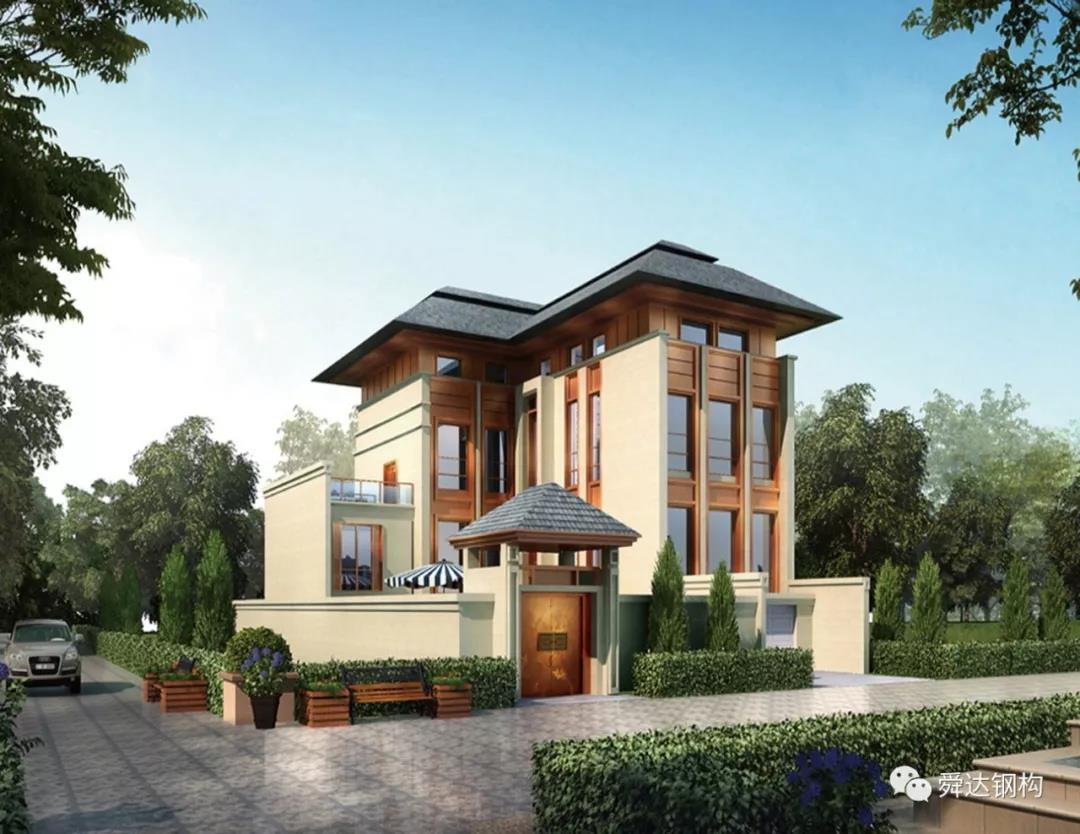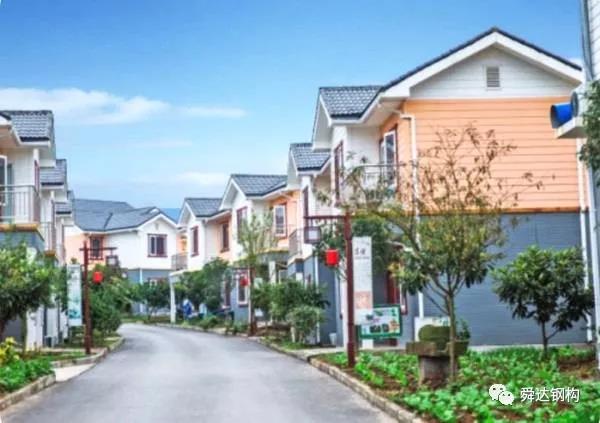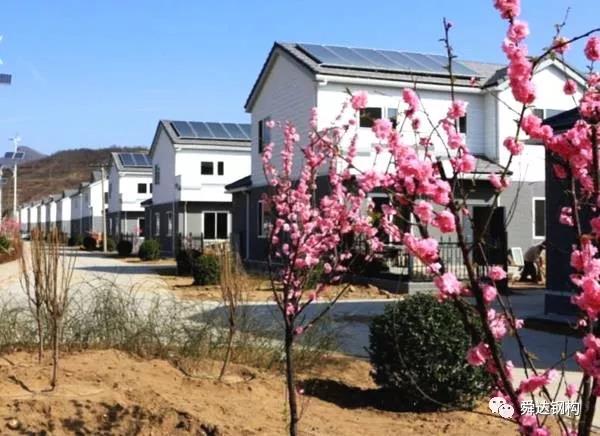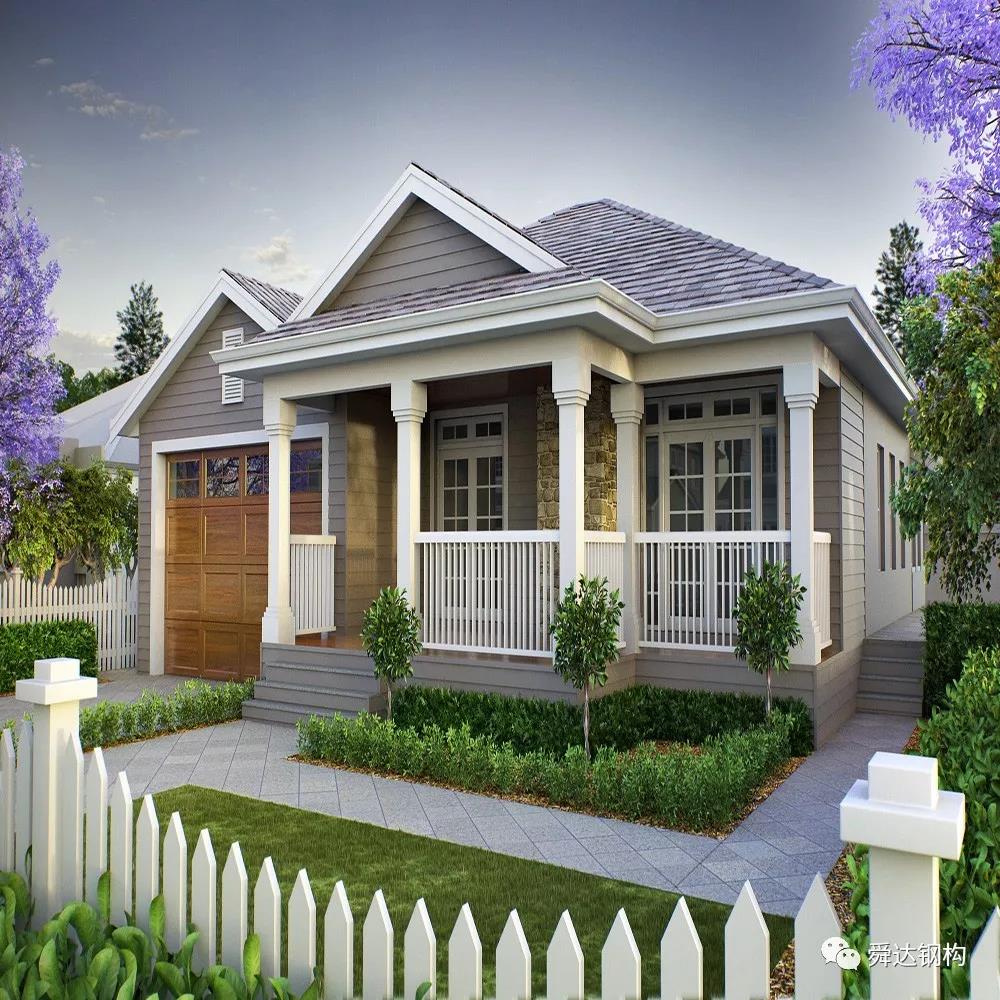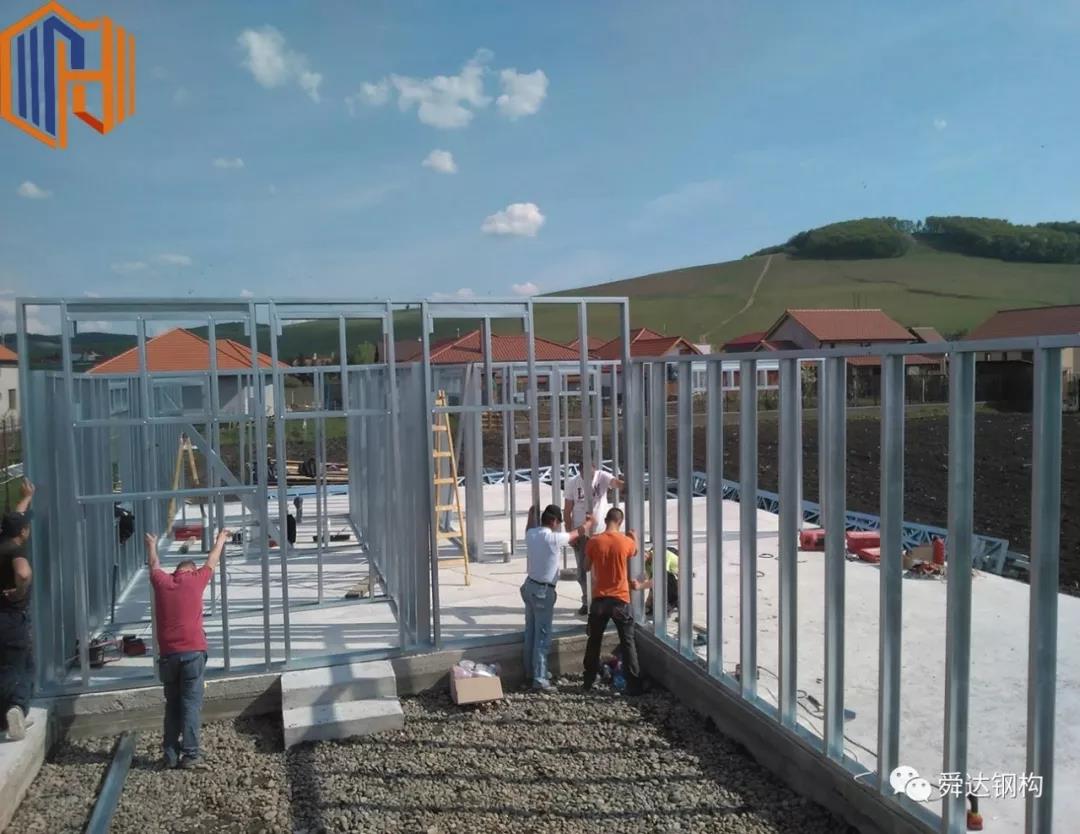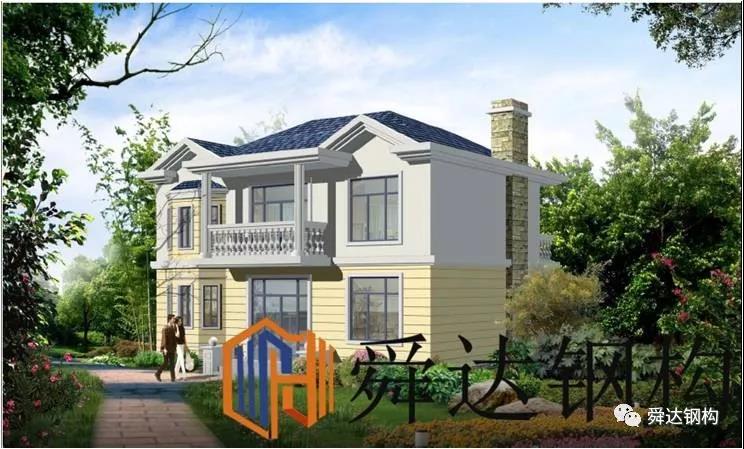Light steel integrated housing belongs to the construction light steel structure sub-industry. With reference to the development path abroad, there are two main development trends:
One is the transition from temporary buildings to permanent buildings;
Second, due to the end of the urbanization process in developed countries and the climax of large-scale construction, the application scope of integrated housing has expanded from temporary construction to commerce, commerce, tourist villas and other fields.
How big is the market?
1. Private residential market
According to estimates, the annual increase in the number of urban villas and rural single-family houses is estimated at about 300,000 units, corresponding to the short-term light steel housing penetration rate. The demand for low-rise light steel integrated houses in this market segment will be around 26,000 units by 2020. In the medium to long-term future, the annual demand for low-rise light steel integrated housing will be around 350,000 units.
2. Tourism and holiday market
Since the domestic tourism industry is still in the investment stage, this direction is only used as a medium- and short-term market growth driver. It is estimated that by 2020, the investment for construction will be about 130 billion yuan. According to estimates, it will bring about 11 billion yuan in market value for low-rise light steel integrated houses. Among them, in view of the overall slowdown in the domestic hotel industry, the hotel investment is expected to bring about 680,000 square meters of market demand by 2020.
3. Pension market
According to the plan of the Ministry of Civil Affairs, China will have a maximum construction gap of 2.898 million beds by 2020. Based on this, if the penetration rate of young steel integrated houses reaches 15% by 2020, the pension real estate will bring 2.7 million square meters of new Increase construction demand. In general, combined with the above calculations, in the short-term phase of the next 3-5 years, the market size of low-rise light steel structure buildings will be around 10 billion, and the long-term phase of 15-20 years will become a market of 100 billion levels.
Opportunities for light steel villas
1. The urbanization process continues
There is still much room for improvement in the housing conditions of the Chinese people. In 2014, the government released the “National New Urbanization Plan (2014-2020)” which clarified the goal of further promoting the urbanization process. On the one hand, in the process of demolition of old cities in the process of urbanization and the migration of residents, the daily life of residents must be guaranteed, so for some areas with insufficient housing, a large number of housing needs to be quickly completed. On the other hand, the construction of the new city pays more attention to environmental protection and energy saving than before. This further consolidates the prefabricated integrated houses and provides fertile ground for activeness.
2. The tourism industry is improving
With the increase of social wealth and the trend of consumption upgrade, the tourism consumption of our nationals is in a stage of explosive growth. According to the “2016 China Tourism Investment Report” released by the National Tourism Administration, the tourism industry continues to heat up and is a new outlet for social investment. Among them, infrastructure construction, park construction, catering and shopping and consumption projects are the main investment directions, and these fields are expected to become new growth points for the low-rise light steel integrated housing business.
3. Aging is coming
Aging not only forces the development of prefabricated buildings at the level of labor resources, but also is one of the important market segments for senior housing at the level of demand. Although the existing veterinary institutions currently need to improve the vacancy rate of beds due to factors such as price and service integrity, in general, there is room for new domestic pension beds in the short term.
What factors drive the development of the industry? 1. Worker shortage and labor cost increase
In recent years, China ’s population fertility rate has decreased, an aging society has arrived, and the demographic dividend advantage has been lost. At the same time, with the development of the Internet industry, more young laborers are engaged in emerging industries such as express delivery and takeaway. This makes it more and more difficult to recruit workers in the construction industry, and the cost of employment is also increasing. Compared with traditional construction methods, assembly-type integrated buildings use refined division of labor to greatly improve production efficiency and reduce manpower requirements; and factory prefabricated production can give full play to the scale effect, thereby achieving cost advantages in a competitive environment with rising labor costs.
2. Environmental protection and energy saving
In recent years, the environmental protection needs of the society have become increasingly prominent, and the calls for protecting wood, reducing the discharge of sewage and construction waste, and construction waste are increasing day by day. Steel-structured building materials and buildings have natural advantages in this regard.
3. Economic efficiency
The domestic economy entered the current stage of steady growth after ending its ultra-high-speed growth, so companies began to pursue more efficient forms of economic organization. Shortening the construction cycle and accelerating business turnover are the common needs of many enterprises, and integrated housing is a good solution.
4. Government encouragement policy
Prefabricated construction has become a construction method encouraged by the government, and many policies are supported as landing supports. In fact, the government has issued guiding policies such as the “13th Five-Year Plan of Prefabricated Building Action Plan” and “Guiding Opinions of the General Office of the State Council on Vigorous Development of Prefabricated Building”, which has clearly defined the industry development goals in the general direction, that is, by 2020 Prefabricated buildings account for 15% of new buildings, and by 2025, the basic requirements will be over 30%. At the specific landing level, governments at all levels of the country have issued actual policies, both for developers and builders, which require assembly rates for new development applications, and provide tax relief or one-time incentives to qualified companies There are also incentive policies, such as consumer-oriented, preferential policies for the purchase of prefabricated houses.
Simply put, light steel villas are not products of the capital market, but industries derived from the social development process. The future development is promising, and friends who have not yet entered or want to enter the game may have to seize the opportunity
Post time: Apr-10-2020

